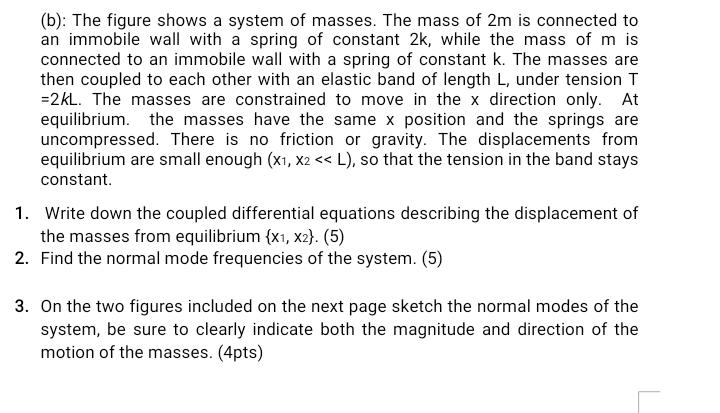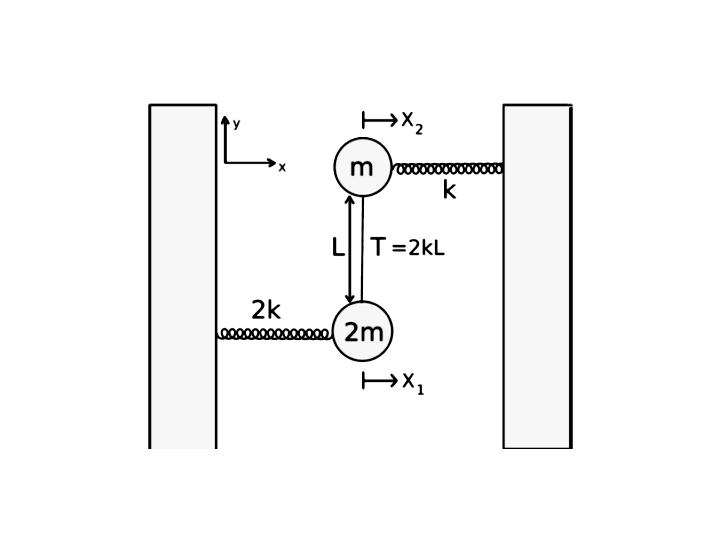Answered step by step
Verified Expert Solution
Question
1 Approved Answer
(b): The figure shows a system of masses. The mass of 2m is connected to an immobile wall with a spring of constant 2k,


(b): The figure shows a system of masses. The mass of 2m is connected to an immobile wall with a spring of constant 2k, while the mass of m is connected to an immobile wall with a spring of constant k. The masses are then coupled to each other with an elastic band of length L, under tension T =2kL. The masses are constrained to move in the x direction only. At equilibrium. the masses have the same x position and the springs are uncompressed. There is no friction or gravity. The displacements from equilibrium are small enough (x1, x2 L), so that the tension in the band stays constant. 1. Write down the coupled differential equations describing the displacement of the masses from equilibrium {x1, x2}. (5) 2. Find the normal mode frequencies of the system. (5) 3. On the two figures included on the next page sketch the normal modes of the system, be sure to clearly indicate both the magnitude and direction of the motion of the masses. (4pts) k LIT=2kL 2k 2m E (b): The figure shows a system of masses. The mass of 2m is connected to an immobile wall with a spring of constant 2k, while the mass of m is connected to an immobile wall with a spring of constant k. The masses are then coupled to each other with an elastic band of length L, under tension T =2kL. The masses are constrained to move in the x direction only. At equilibrium. the masses have the same x position and the springs are uncompressed. There is no friction or gravity. The displacements from equilibrium are small enough (x1, x2 L), so that the tension in the band stays constant. 1. Write down the coupled differential equations describing the displacement of the masses from equilibrium {x1, x2}. (5) 2. Find the normal mode frequencies of the system. (5) 3. On the two figures included on the next page sketch the normal modes of the system, be sure to clearly indicate both the magnitude and direction of the motion of the masses. (4pts)
Step by Step Solution
There are 3 Steps involved in it
Step: 1

Get Instant Access to Expert-Tailored Solutions
See step-by-step solutions with expert insights and AI powered tools for academic success
Step: 2

Step: 3

Ace Your Homework with AI
Get the answers you need in no time with our AI-driven, step-by-step assistance
Get Started


